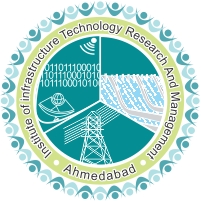Evaluation of Rainfall Tendency for the Twentieth Century over Indira Sagar Region in Central India
Authors :- Shukla, R, Khare, D, Rudra, R, Tiwari, P, Sharma, H, Daggupati, P. and Goel, P.
Publication :- American Journal of Climate Change, 13, 47-68. 2024.
The study investigates long-term changes in annual and seasonal rainfall patterns in the Indira Sagar Region of Madhya Pradesh, India, from 1901 to 2010. Agriculture sustainability, food supply, natural resource development, and hydropower system reliability in the region rely heavily on monsoon rainfall. Monthly rainfall data from three stations (East Nimar, Barwani, and West Nimar) were analyzed. Initially, the pre-whitening method was applied to eliminate serial correlation effects from the rainfall data series. Subsequently, statistical trends in annual and seasonal rainfall were assessed using both parametric (student-t test) and non-parametric tests [Mann-Kendall, Sen’s slope estimator, and Cumulative Sum (CUSUM)]. The magnitude of the rainfall trend was determined using Theil-Sen’s slope estimator. Spatial analysis of the Mann-Kendall test on an annual basis revealed a statistically insignificant decreasing trend for Barwani and East Nimar and an increasing trend for West Nimar. On a seasonal basis, the monsoon season contributes a significant percentage (88.33%) to the total annual rainfall. The CUSUM test results indicated a shift change detection in annual rainfall data for Barwani in 1997, while shifts were observed in West and East Nimar stations in 1929. These findings offer valuable insights into regional rainfall behavior, aiding in the planning and management of water resources and ecological systems.

